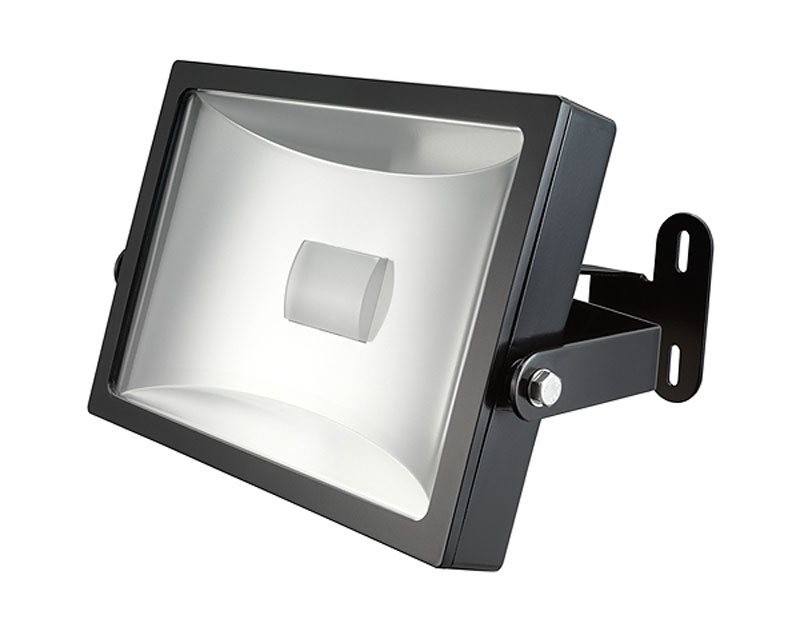
Mike Herbert, Senior Product Manager at JCC, explains the benefits of selecting the correct sensing solution when installing floodlights.
JCC believes floodlighting serves many purposes; from lighting domestic driveways and gardens to enhancing security in commercial applications and car parks. Unlike interior fixtures that are bound by room constraints, high powered exterior lighting needs to be carefully planned to ensure that illumination is directed where needed and does not affect peripheral buildings, roads or businesses.
The design of many traditional floodlights tended to be limited to vertical control, due to the fixed bracket design which only allows for up and down adjustment of the luminaire. This often results in the light distribution being dictated to by the angle of the wall. This can prove troublesome when trying to control lighting on angled driveways or away from neighboring buildings.
In addition to the fixtures ability to direct the light where it is required, the beam angle of the fitting plays a key role in controlling illumination and avoiding unwanted light spill.
As the mounting position can vary due to a number of features of the building, it can be difficult to select a specific light level that adequately illuminates the desired area. A simpler solution is to have greater flexibility of how to direct the light at the point of installation and put the control into the hands of the installer.
When designing NiteFlood, JCC’s latest range of LED floodlights, we focused on this issue and incorporated a multi-directional pivot bracket that allows complete control of the direction of the light, both horizontally and vertically.
Selecting the correct sensing solution
Due to the nature of where floodlights are installed, the use of sensing is often a core requirement. As floodlights tend to have high light outputs it is important that they only come on when necessary, are not left at full brightness throughout the night and are not activated during the day.
Why PIR is more suitable than microwave for domestic floodlighting
PIR 
● Complete control over the detection area
● Great for targeted areas
● Suitable for driveways, walkways and doors
Microwave

● General movement detection leads to false triggering (such as leaves, wildlife, pets and litter)
● 360º detection makes sensing difficult to control
● Ability to sense through walls, further increasing the chance for unnecessary triggering
PIR (passive infrared) and microwave tends to constitute that vast majority of sensors that are used when installing floodlighting. To reduce the chance of unwanted triggering, NiteFlood 15W is available with PIR that provides an 8m range over a 120º field of detection. It also incorporates a built in daylight sensor with adjustable lux level and the ability to control the hold time from five seconds to eight minutes.








